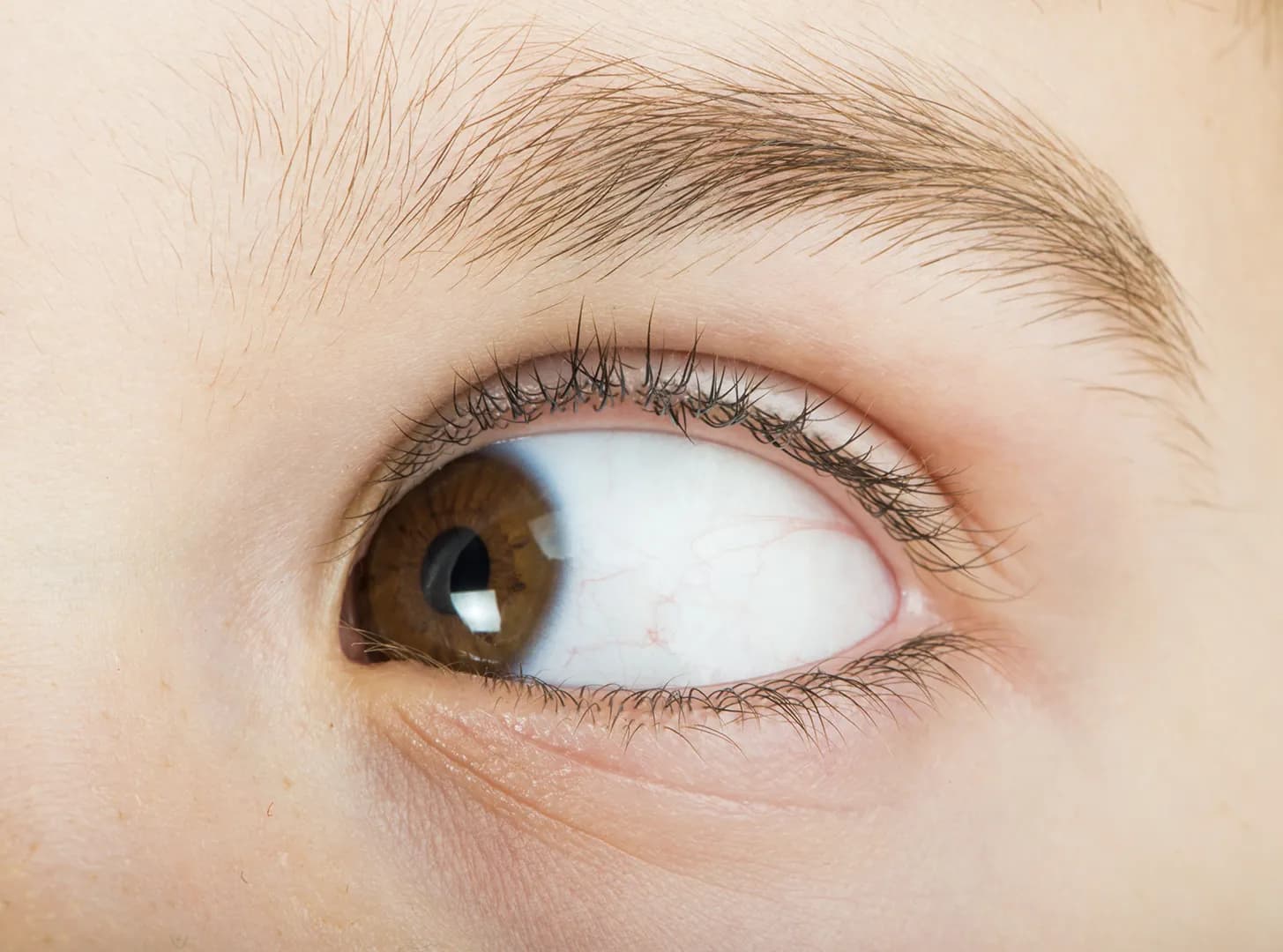Strabismus (crossed eyes) results from an abnormality of the neuromuscular control of eye movement. It’s less common for the actual eye muscle to have a problem –the condition involving one eye being turned in a direction that is different from the other eye. Strabismus is often inherited. Treatment may include glasses, patching, eye exercises, medication, or surgery.
Other conditions associated with strabismus include:
Uncorrected refractive errors
Poor vision in one eye
Cerebral palsy
Down syndrome (20-60% of these patients are affected)
Hydrocephalus (a congenital disease that results in a buildup of fluid in the brain)
Brain tumors
Stroke (the leading cause of strabismus in adults)
Head injuries can damage the area of the brain responsible for control of eye movement, the nerves that control eye movement, and the eye muscles
Neurological (nervous system) problems
Graves' disease (overproduction of thyroid hormone)

Under normal conditions, the six muscles that control eye movement work together and point both eyes in the same direction. Patients with strabismus have problems with the control of eye movement and cannot keep normal ocular alignment (eye position). Strabismus can be categorized by the direction of the turned or misaligned eye:
Inward turning (esotropia)
Outward turning (exotropia)
Upward turning (hypertropia)
Downward turning (hypotropia)
Although strabismus is common among children, adults can also experience strabismus. Most commonly, ocular misalignment in adults is due to stroke, but it can also occur from physical trauma or from a childhood strabismus that was not previously treated or has recurred or progressed.
How is strabismus treated?
Eyeglasses or contact lenses: Used in patients with uncorrected refractive errors. With corrective lenses, the eyes will need less focusing effort and may remain straight.
Prism lenses: Special lenses that can bend light entering the eye and help reduce the amount of turning the eye must do to look at objects.
Orthoptics (eye exercises): May work on some types of strabismus, especially convergence insufficiency (a form of exotropia).
Medications: Eye drops or ointments. Also, injections of botulinum toxin type A (such as Botox) can weaken an overactive eye muscle. These treatments may be used with, or in place of, surgery, depending on the patient's situation.
Patching: To treat amblyopia (lazy eye), if the patient has it at the same time as strabismus. The improvement of vision may also improve control of eye misalignment.
Eye muscle surgery: Surgery changes the length or position of eye muscles so that the eyes are aligned correctly. This is performed under general anesthesia with dissolvable stitches. Sometimes adults are offered adjustable strabismus surgery, where the eye muscle positions are adjusted after surgery.

What can happen if strabismus is not treated?
Some believe that children will outgrow strabismus or that it will get better on its own. In truth, it can get worse if it is not treated. If the eyes are not properly aligned, the following may result:
Lazy eye (amblyopia) or permanent poor vision in the turned eye. When the eyes are looking in different directions, the brain receives two images. To avoid double vision, the brain may ignore the image from the turned eye, resulting in poor vision development in that eye.
Blurry vision, which can affect performance in school and at work, and enjoyment of hobbies and leisure activities
Eye strain
Fatigue
Headaches
Double vision
Poor 3-dimensional (3-D) vision
Low self-esteem (from embarrassment about one’s appearance)
It is also possible that by not diagnosing strabismus, a serious problem (such as a brain tumor that is causing the condition) may be overlooked.
Conclusion
In conclusion, strabismus, also known as crossed eyes or eye misalignment, is a condition where the eyes do not line up with each other. It is primarily caused by issues with the neuromuscular control of eye movement, which involves the brain1. Less commonly, the problem lies with the actual eye muscle. Strabismus can occur due to muscle dysfunction, farsightedness, problems in the brain, trauma, or infections. Risk factors include premature birth, cerebral palsy, and a family history of the condition. It can be present at birth or develop in childhood, often due to a problem with the muscles that move the eyes. If left untreated, it can lead to complications such as blurred or double vision, and poorly developed vision in one eye, a condition known as amblyopia or lazy eye. Therefore, early detection and treatment of strabismus are crucial for maintaining healthy vision.